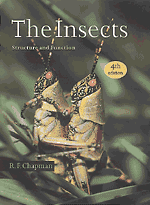Book contents
- Frontmatter
- Contents
- Preface
- Acknowledgments
- PART I The Head, Ingestion, Utilization and Distribution of Food
- PART II The Thorax and Locomotion
- PART III The Abdomen, Reproduction and Development
- PART IV The Integument, Gas Exchange and Homeostasis
- 16 Integument
- 17 Gaseous exchange
- 18 Excretion and salt and water regulation
- 19 Thermal relations
- PART V Communication
- Taxonomic index
- Subject index
18 - Excretion and salt and water regulation
Published online by Cambridge University Press: 05 June 2012
- Frontmatter
- Contents
- Preface
- Acknowledgments
- PART I The Head, Ingestion, Utilization and Distribution of Food
- PART II The Thorax and Locomotion
- PART III The Abdomen, Reproduction and Development
- PART IV The Integument, Gas Exchange and Homeostasis
- 16 Integument
- 17 Gaseous exchange
- 18 Excretion and salt and water regulation
- 19 Thermal relations
- PART V Communication
- Taxonomic index
- Subject index
Summary
The activities of the cell are carried out most efficiently within a narrow range of conditions. It is therefore important that the environment within the cell and in the animal in general should be kept as near optimal as possible, a process known as homeostasis. This involves the maintenance of a constant level of salts and water and osmotic pressure in the hemolymph, the elimination of toxic nitrogenous wastes derived from protein and purine metabolism, and the elimination of other toxic compounds which may be absorbed from the environment. The excretory system is primarily responsible for homeostasis, often following metabolic modification of toxic compounds to chemicals more readily excreted or which can be safely stored. Some molecules entering the body from the environment may be too large or too toxic to be dealt with by the excretory system and various other tissues may be involved in metabolizing them to less toxic or more readily excretable substances. Some insects sequester toxic compounds, isolating them from the major metabolic pathways.
EXCRETORY SYSTEM
Excretion involves the production of a fluid urine that carries potentially toxic materials from the body. This process is carried out in two stages: the relatively unselective removal of substances from the hemolymph, forming the primary urine, and the selective modification of this primary urine by the resorption of useful compounds or the addition of others that may be in excess in the body. In insects, the primary urine is produced by the Malpighian tubules.
- Type
- Chapter
- Information
- The InsectsStructure and Function, pp. 478 - 508Publisher: Cambridge University PressPrint publication year: 1998
- 5
- Cited by



